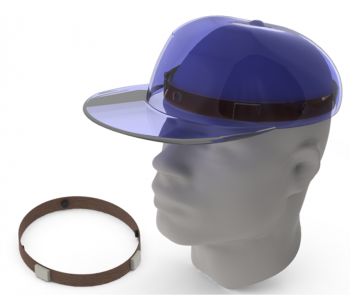BALCAP Balance Prosthesis
This project addresses the needs of patients with chronic postural instability by improving their balance for both static and dynamic activities, and facilitating normal function during activities of daily living. The head-worn BALCAP prosthesis applies low-amplitude vibrotactile cues directly to the head via hatband tactors (concealed in any type of hat) that provide the wearer with feedback concerning head tilt in the pitch and roll planes, and combinations thereof. The BALCAP functions whether or not the user is stationary or moving.
The availability of a practical, one-piece, noninvasive, discreet, and low-cost balance prosthesis will enhance the quality of life for balance-disordered patients and could lead to further advancements in this area (e.g., optimization of training procedures).
The use of the BALCAP prosthesis as an aid, both inside and outside of the home, could yield both immediate (assistive) and longer-term (rehabilitative) benefits for wearers. The BALCAP prosthesis also allows patients to “train”  while performing activities of daily living, substantially reducing patient burden.
while performing activities of daily living, substantially reducing patient burden.
Previous work has demonstrated increased stability on computerized dynamic posturography (CDP) SOT Conditions 5 and 6 in patients with bilateral vestibular loss while using head-mounted vibrotactile stimulators [Goebel2009]. Another recent study of the BALCAP yielded significant assistive and rehabilitative benefits for multiple objective and subjective measures, along with excellent user-acceptance of the device [Richardson2014].
References:
Goebel JA, Parker BE Jr, Richardson NT, Olowin AB, Cholewiak, RW. “Effectiveness of head-mounted vibrotactile stimulation in subjects with bilateral vestibular loss: a phase I clinical trial.” Otol Neurotol, 2009 Feb;30(2):210-6.
Richardson NT, Clark BR, Parker BE, Sinks BC, Goebel JA. Assistive and rehabilitative effects of a head-mounted vibrotactile prosthesis (BALCAP) for chronic postural instability. Feb 23, 2014, 37th Annual Midwinter Meeting, Association for Research in Otolaryngology Poster Presentation.
